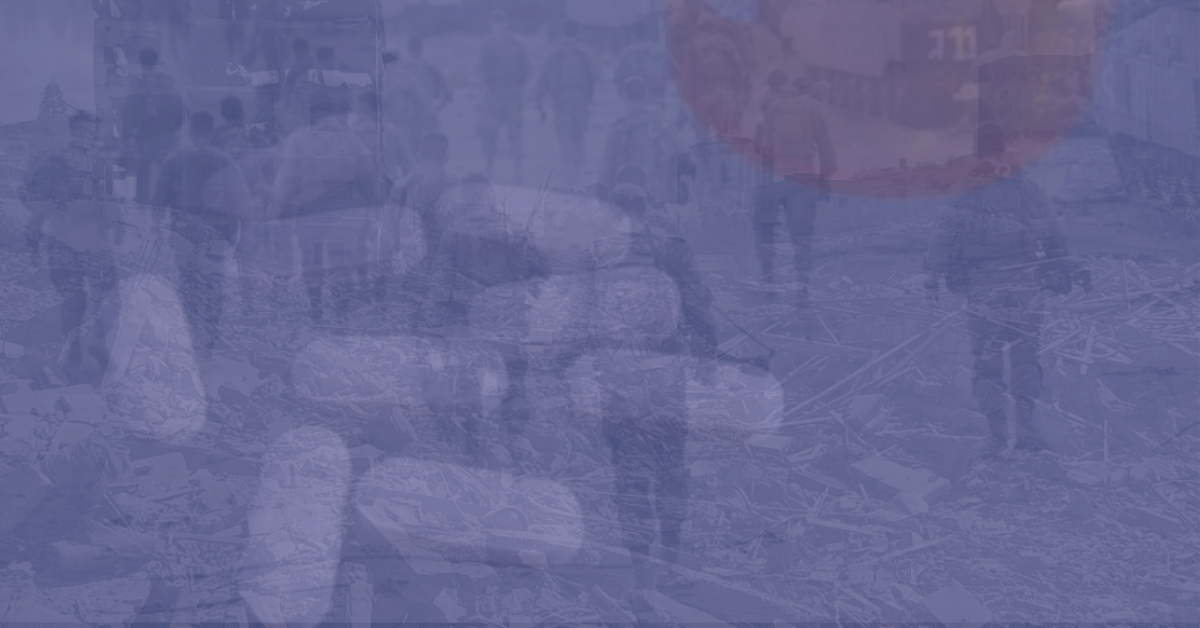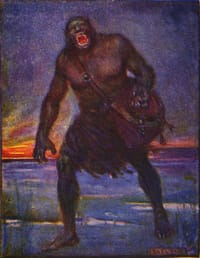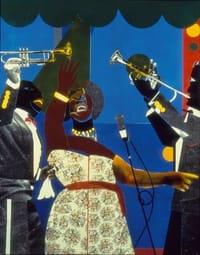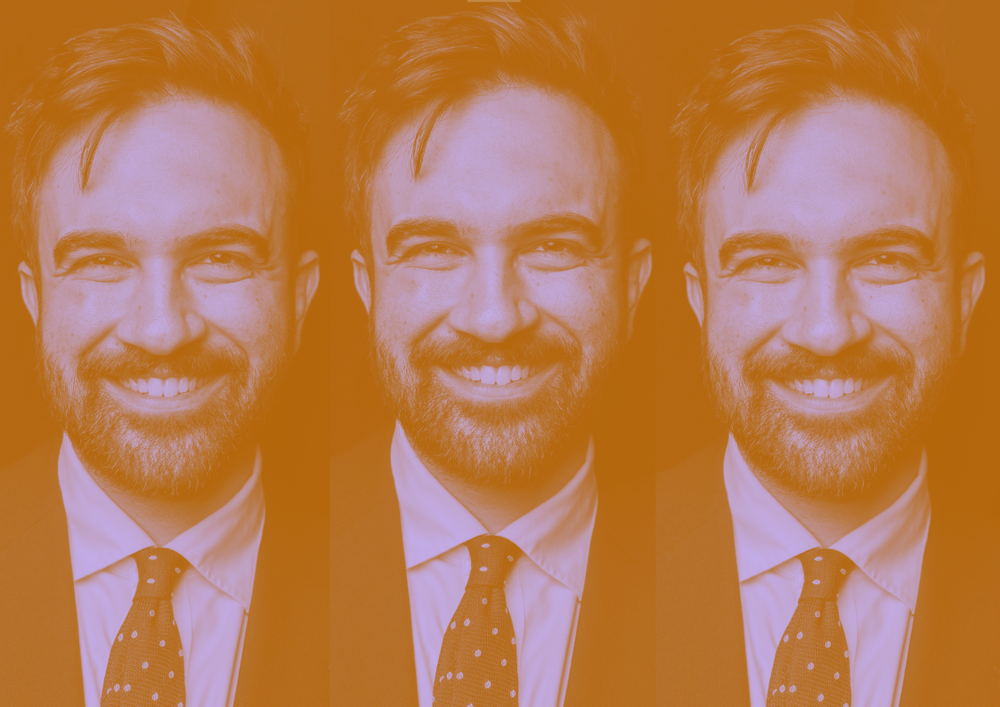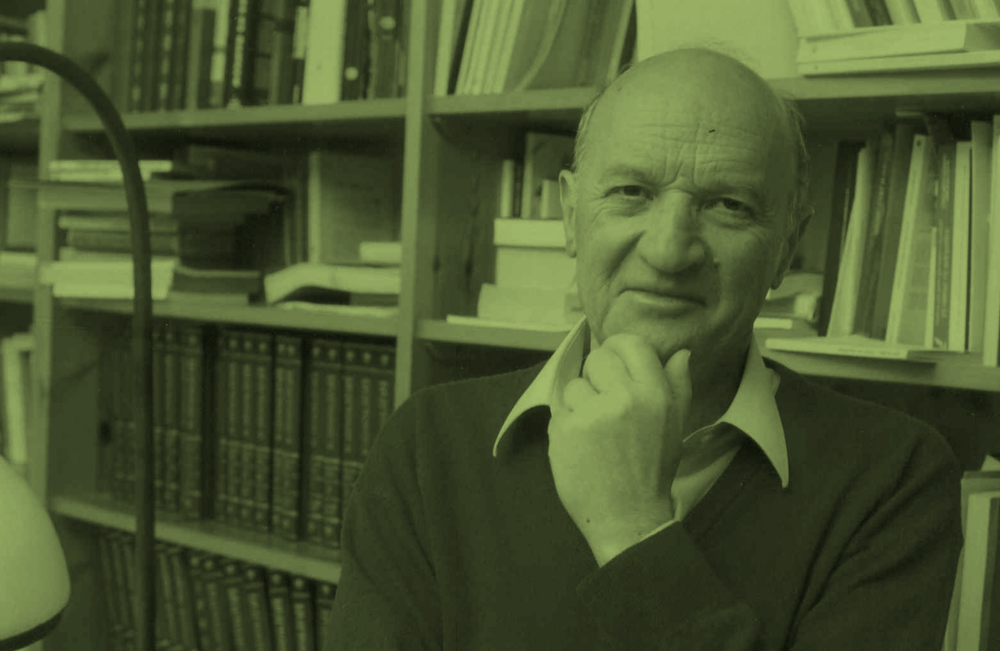On 27 June 2025, the Middle East Eye (MEE)[1] reported that the Gaza authorities had found bags of aid containing, or mixed in with, pills of Oxycodone, ‘an opioid meant to treat severe and long-term pain, often prescribed to cancer patients’, which is incredibly addictive and has severe effects like hallucination. These packages of aid had come from the Gaza Humanitarian Foundation (GHF), which MEE describes as ‘the controversial US-Israeli organisation operating aid points in Gaza [which] has been widely condemned by human rights organisations for its lack of transparency and accountability.’
Around the same time, the US State Department had approved $30 million in funding for the GHF.[2] In the coming weeks after the incident with the flour bags, it became clear that the GHF were also engaged in overt methods of enacting genocide, in what Doctors Without Borders would come to call ‘orchestrated killing’ at aid sites.[3] But it should not be forgotten that one of their earliest tactics was attempting to poison Palestinians with addictive substances, an underacknowledged tool which has a long history entwined with imperialism.
For anyone aware of the US and its policies in the ‘War on Drugs’, none of this should come as a surprise. Opioids and other addictive drugs have been crucial in advancing the US’s political agenda, using these substances as a means of destabilising governments, forcing nations into unequal exchange relations and dependency, and to destroy and control its own minority and poor communities through incarceration. For all the talk over the decades of coming down hard on drugs and the constant racialised scapegoating of ethnic minorities as drug dealers and traffickers, the US has not curtailed the trade or production of illegal drugs through prohibitionist policies. Its representatives, and organisations such as the CIA, have either ignored or outright abetted the proliferation of drugs in Latin American countries as a means of fighting communism, as well as aiding paramilitaries with ties to drug gangs to commit human rights abuses on a massive scale.
On US soil, the Fort Bragg Cartel perpetrates not only drug trafficking but horrendous sexual abuse and murder.[4] Antony Lowenstein writes that the war on drugs has real consequences, but it is also a ‘phoney war pushed by the US to control segments of its own population, manage client states near and far, enrich the US defence industry, and benefit close allies.’[5]
Historically, Britain used opium to demolish China’s monopoly on tea, and plunged China into widespread addiction and social unrest. The wars that followed forced China into a dependent and unequal relationship with the West. Whilst the language of ‘disease’ has played a large part in creating the stigma that is attached to addiction, imperialists saw the use of drugs within exploitable regions as a kind of artificial ‘smallpox blanket’ which could be used to further colonisation. Drug trafficking cannot happen without imperialism, and drug trafficking has been a key, effective weapon in the arsenal of imperialism.
But this is not a new phenomenon in Palestine or the wider Levant region either. The history of this branch of the drug trade can be traced to Palestine’s neighbour: Egypt. From there, we can see the spread of drug trafficking as a weapon of Zionism and imperialism throughout the area.
Empire and Drugs
Like many other countries, Egypt had its own unique historical relationship with the various drugs traded around the world prior to British or European rule. The casual consumption of recreational drugs like hashish was commonplace. After some initial attempts to repress the drug, the British Empire eventually made no attempts to stop the distribution of hashish and many high up in the British occupying forces saw it as a relatively harmless drug in comparison to heroin and cocaine.[6] Others believed it was an inherently oriental practice to languish in the dreaming fugue that hashish appeared to put its users into. In contrast, the Egyptian ruling class despised the drug for what they saw as
[...] its apparent damaging effect on their society: decreased productivity, social fragmentation and stagnation, and increased incidences of mental illness were attributed to hashish usage by Egyptian social reformers.[7]
Neither of these approaches dealt with the complex and multifaceted reasons why hashish users partook in the drug. As Gabriel Nahas writes:
First, unlike the legislators, hashish users did not perceive their habit as disgraceful, harmful, or antisocial. Second, hashish users believed that, unlike alcohol, hashish was not contrary to their religious beliefs. They were outraged to see that Egyptian civil law condoned alcohol whereas it prohibited hashish. Third, the miserable social conditions were perhaps what caused the people to seek escape through drugs.
This changed in 1925 after international laws and regulations were strengthened by the League of Nations, aimed at curbing the production and distribution of heroin and cocaine. European pharmaceutical companies were prohibited from distributing the substances within their home markets and dumped their stock in Egypt,[8] leading to an outbreak in heroin addiction, illness, and fatal overdoses.[9] The Anglo-Egyptian authorities responded by passing legislation which banned the sale, purchase and possession of opium, heroin, and cannabis. This was enforced[10] by imprisoning thousands, increasing spending on the police and military, and introducing harsher penalties for drug offences. Wealthy businessmen in the imperial core made millions selling their products to workers in the periphery. In contrast, those workers felt the full force of state oppression for their consumption of the drugs.
The war on drugs led to a decline in heroin imports into Egypt, and the traffickers had to reorient their business. The late 1920s saw an increase in the import of opium via Turkey and hashish from Syria-Lebanon - both smuggling lines operated through Palestinian territory - which led to Mandate Palestine becoming a major hub of criminal drug trafficking activity in the 1930s.[11]
Although the League of Nations introduced some restrictions on cannabis for member countries in 1925, trade continued and was permissible between countries which didn’t implement bans. The policy was strengthened with new guidance in 1934. The imperialist countries in the League made decisions on behalf of the colonised people they occupied, who were not represented. French occupation forces implemented anti-cannabis legislation in the Levant in its controlled territories. Endemic corruption of French and Lebanese politicians led to an explosion of hashish production and consumption in the area. A Central Narcotics Intelligence Bureau report went as far as to declare that ‘ministers, deputies and notables were sowing hashish’ and speculated that the involved parties were reaping a handsome profit.[12]
In a sequence of events reminiscent of drug-related corruption in countries such as Honduras, large landowners in Lebanon not only cultivated the crop illegally, but also acted with force to prevent peasantry and agricultural workers from destroying the crop. The French occupation forces supported the landowners in this endeavour, or at least chose not to interfere.[13] Allowing the propertied class to benefit from the arrangement made them supportive of the ongoing occupation. After cultivation, the drugs were then smuggled across the Levant to Egypt, where supply was lower and prices were higher.[14]
Palestine became an important link for smugglers in this new network, and in 1939, it was dubbed ‘the most important hashish depot in the Levant’ by an expert on the League of Nations cannabis committee.[15] The result was a large increase in the consumption of the drug in Palestine as local dealer networks formed to distribute the excess drug locally. Opium was also smuggled through Palestine from other countries, including Greece and Turkey. Many in the underdeveloped occupied Palestine became involved in drug-running operations as they were tempted by the lucrative nature of the industry.[16]
Hashish and opium were not commonly traded and used by Palestinians before the British occupation, but the direct effects of British and French imperialism in the region nurtured the formation of a burgeoning criminal underworld, some of which had links to the Zionist settlers. Members of the violent Zionist Irgun movement were reported to have used the money from drug transactions to fund the purchase of arms, which it would use to terrorise the Arab population of Palestine. This was reported by the intelligence arm of the Hanagah, the foremost paramilitary organisation operating in Palestine before 1948, demonstrating widespread knowledge among Zionists in the Levant that drugs were helping to fund their movement.[17]
Smuggling in Israel
After the establishment of Israel in 1948, trafficking routes remained, but some changes occurred. A UN mission sent to study the worsening drug problem in the region in the late 50s noted that new networks had developed to move narcotics across the Israeli border with Jordan.[18] As the latter half of the 20th century went on, it became clear that Israel was expanding its drug trade to countries such as Lebanon. As Israel Shahak wrote, ‘it turns out that the state of Israel, which professes to wage an uncompromising struggle with the epidemic of drug addiction, is in reality the largest-scale importer of drugs in the Middle East.’[19] To ensure this trade continued uninterrupted, Israel bombarded its borders with Lebanon as part of a wider effort to secure trade supremacy.
Israeli intelligence worked alongside assets in the Lebanese criminal underworld to assist with the distribution of narcotics into Egypt and Jordan.[20] The disruption caused by the drugs would draw resources away from the enemy states, create addiction and health problems in their militaries, and allow for the Israeli intelligence agencies to cultivate assets who were working in shipping, ports, transport companies, and the border force of the neighbouring countries.[21]
It was theorised by Shahak that ‘part of the motivation must be to weaken the disaffection of Middle Eastern masses by encouraging drug addiction and thus promoting political apathy.’ Shahak went so far as to say:
The Israeli wars in Lebanon should be compared to the Opium Wars of the 19th century. For an effective pursuit of the trade interests described here, Israeli rule over the “Zone” is necessary, and this, in turn, guarantees the continuation of the wars in Lebanon.
On an international level, Israel has links with several countries embroiled in the war on drugs and trafficking, helping to provide funding and training both to traffickers and government death squads under the term ‘security support’.[22] These countries have historically included Colombia and Panama, though as late as 2014, Honduras also strengthened ties with Israel as the drug trade raged on and claimed lives.
Within Israel, smoking of hashish and use of other drugs increased. The scapegoating of users by the media and the police called the influx of drugs and their use an immigrant problem.[23] In truth, the biggest exporter of drugs to Israel was Israel ‘herself’, and one of the locations of these drugs was Gaza.
The Drug Crisis in Gaza
In the late 2000s in Gaza, there was a significant increase in cases of drug addiction among the population.[24] A key drug responsible for this trend was Tramadol, which was widely used in Gaza as a painkiller. Under the Israeli blockade, tunnels were used to bring food and household goods into the strip, but illegal pharmaceuticals quickly became profitable commodities in the tunnel trade.
The head of the police anti-drug unit in Gaza accused Israeli authorities of smuggling drugs into Gaza and turning a blind eye to gangs hiding narcotics in commercial goods. Police and health workers in Gaza struggled with a lack of equipment for tracking down illicit drugs and for providing treatment to those affected.[25] These routes and existing drug trade connections will doubtless have been crucial in ensuring the poisoning which happened at the aid camps, and will likely be used again for similar purposes.
The result is high drug use and addiction rates in Gaza, and more generally across all of Palestine. Medical researchers have previously suggested that authorities in Gaza and the West Bank must strengthen their harm reduction policies to combat the epidemic.[26] However, the suffocating effects of the blockade meant the resources for such policies would not be available.
Researchers have found a strong connection between war-related trauma and increased drug abuse, which goes some way to explaining the high demand for painkillers in Gaza under the blockade. Israel’s siege made thousands of young adults jobless, which was a leading cause of poverty and mental health issues among the population, which then turned to drugs to alleviate these problems.
According to Dr Samir Al Zaqout, the historical response by the governing institutions in Palestine, by both Hamas and Fatah in the Palestinian Authority, has been a hard-line one, with Hamas shooting at least one drug dealer dead and allegations of torture being made against them. Fatah has made much of how drug dealers are ‘collaborators’ with the Zionist regime.[27] Whilst on the face of it, some would take this as a satisfactory response to criminality, in the article which reports on this, there did not appear to be a clear dichotomy between addicts and dealers in the people jailed for drug charges in Gaza. Often, many of the addicts were traumatised, working class and poor, and many of the traffickers stated that they took the job to make money alongside poorly paying jobs. Statements elsewhere in the article highlight that many of the traffickers were young and looking to make money. In a reversal of the historical situation, Egypt was now the route by which drugs are trafficked into Palestine.
What has happened recently in Palestine is a continuation of this history, with the drugs being trafficked into food by a US-Israeli NGO. With all of this in mind, defunding and dismantling the GHF is the clear and only humane response, with funding redirected to more trustworthy organisations such as UNRWA. Let us speak in no uncertain terms: they are a paramilitary death squad, as has often been seen in the war on drugs.
These death squads and the IDF have been openly working with gangs in Gaza, which are comprised of ex-drug traffickers and organised criminals, to steal aid from the Palestinians, to undermine the effort to relieve the famine.[28] The gangs are armed with Israeli weapons and operate under the eyes and guidance of the IDF to undermine aid distribution networks and eliminate the UN’s humanitarian efforts. The forces are headed by Yasser Abu Shabab and assisted by Shai al-Sufi, who have both previously been imprisoned on drug trafficking charges prior to October 7th 2023.
On a larger level, we wish to push back against any assumption that a kind of ‘third worldist policing’ is the appropriate or obvious response against the drug trade. Whilst we understand that the resistance and government in Palestine only have a limited set of options to deal with these kinds of social phenomena, especially now, there is no guarantee that prohibition on an international scale by different nations or peoples will ‘crush’ the trade. In fact, in Palestine as in elsewhere, addicts and dealers are often scapegoats for institutional failings – called ‘collaborators’ by the very same Palestinian Authority that works with the Zionist entity[29]. It is important that whilst we condemn the use of drugs as a weapon of control and genocide, we must be careful not to reproduce the rhetoric and lies of the US Drug Enforcement Agency and the CIA. These agencies themselves have been key tools of imperialism in ensuring US hegemony.
Under the veil of fighting drugs, the US has overthrown governments, invaded countries and destroyed many, many lives. We must challenge the War on Drugs where we see it, and push for harm reduction in our communities and across the world. Prohibition has strengthened the drug trade, whilst simultaneously ruining communities and addicted individuals. We must seize the means of care, and provide the means for addicts to medicate safely, with support networks available for them if or when they decide to quit. This, of course, means Palestinian addicts first and foremost.
Shraddha Joshi, Opioid pills discovered in US-backed food aid, Gaza authorities say, Middle East Eye, 2025. ↩︎
Trump hopeful for Gaza ceasefire, possibly 'next week', RTE News, 2025. ↩︎
Medecins Sans Frontieres, THIS IS NOT AID. THIS IS ORCHESTRATED KILLING, 2025. ↩︎
John Bowden, Stunning accusations of sex trafficking and drug abuse by US troops at Fort Bragg, The Independent, 2023. ↩︎
Antony Lowenstein, Pills, Powder and Smoke: Inside the Bloody War on Drugs, Scribe: London, 2020, p. 3 ↩︎
Haggai Ram, Intoxicating Zion: A Social History of Hashish in Mandatory Palestine and Israel, Stanford University Press: Stanford, 2020 p. 37 ↩︎
G G Nahas, Hashish and drug abuse in Egypt during the 19th and 20th centuries, Bulletin of the New York Academy of Medicine, 1985. ↩︎
Philip Robins, Middle East Drugs Bazaar: Production, Prevention and Consumption, Hurst: London, 2016, p. 16. ↩︎
Tom Carnwath and Ian Smith, Heroin Century, Routledge: London, p. 55. ↩︎
Cyrus Schayegh, The Middle East and the Making of the Modern World, Harvard University Press: London, p. 185. ↩︎
Haggai Ram, Intoxicating Zion: A Social History of Hashish in Mandatory Palestine and Israel, Stanford University Press: Stanford, 2020, pp. 38-39. ↩︎
LNA, OAC, C.75.M68, Annual Reports by Governments for 1939; Central Narcotics Intelligence Bureau, Government Press: Cairo, 1940, p.101. ↩︎
Haggai Ram, Intoxicating Zion: A Social History of Hashish in Mandatory Palestine and Israel, Stanford University Press: Stanford, 2020, p. 66. ↩︎
G G Nahas, Hashish and drug abuse in Egypt during the 19th and 20th centuries, Bulletin of the New York Academy of Medicine, 1985. ↩︎
Haggai Ram, Intoxicating Zion: A Social History of Hashish in Mandatory Palestine and Israel, Stanford University Press: Stanford, 2020, p. 48. ↩︎
Ibid. p. 54 ↩︎
Yossi Melman, High Times in Zion: An Israeli History of Drugs, Haaretz, 2020. ↩︎
Benny Morris, Israel's Border Wars, 1949-1956 : Arab Infiltration, Israeli Retaliation, and the Countdown to the Suez War, Oxford University Press: Oxford, pp.37-40 ↩︎
Israel Shahak, The Real Israeli Interest in Lebanon, Washington Report on Middle East Affairs, 1996. ↩︎
Jonathan Marshall, The Lebanese Connection Corruption, Civil War, and the International Drug Traffic, Stanford University Press: Stanford pp. 133-138. ↩︎
Ibid. pp. 140-141 ↩︎
Israel Shahak, What Israelis Know and Americans Don't About the Drug Triangle: Colombia, the US and Israel, Washington Report on Middle East Affairs, 1989. ↩︎
Haggai Ram, Intoxicating Zion: A Social History of Hashish in Mandatory Palestine and Israel, Stanford University Press: Stanford, 2020, pp. 165-66 ↩︎
Yusef Progler, [Drug addiction in Gaza and the illicit trafficking of tramadol(https://pmc.ncbi.nlm.nih.gov/articles/PMC3082799/), Journal of Research in Medical Sciences, 2010. ↩︎
Fedaa al-Qedra, Israel ‘turns a blind eye’ to Gaza’s drug influx, Al Jazeera, 2017. ↩︎
Salwa Massad, Hadil Dalloul, Lina Adwan, Khalid Abu Saman, Rawan Kafri, Walaa Abu Alia, Marina Tucktuck & Lisa G. Johnston, Alarmingly high prevalence of high-risk drug use among palestinian males: a cross-sectional study, BMC Psychiatry, 2023. ↩︎
Uncomfortably Numb: Inside Gaza's Opioid Addiction Crisis | REWIND, Al Jazeera English, 2019 ↩︎
Samuel Forey, In Gaza, Israel promotes anti-Hamas militias linked to criminal networks, Le Monde, 2025. ↩︎
Uncomfortably Numb: Inside Gaza's Opioid Addiction Crisis | REWIND, Al Jazeera English, 2019. ↩︎


